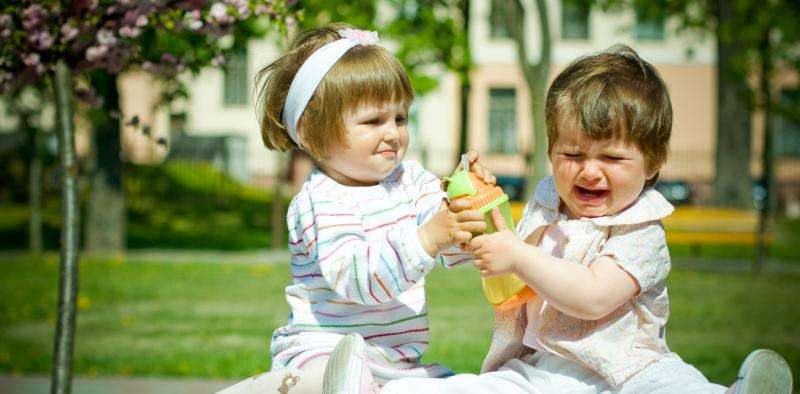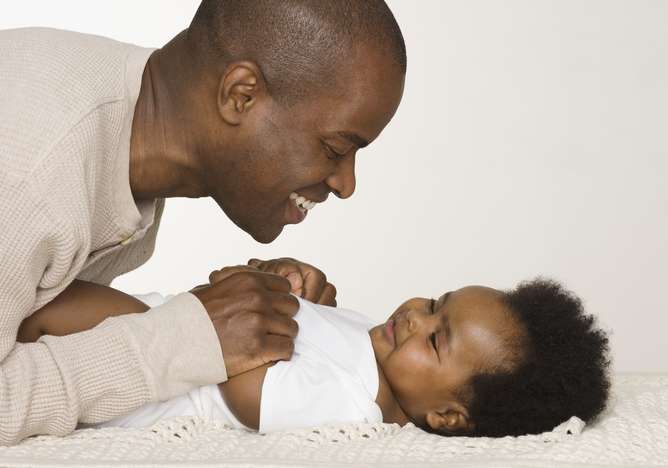How do children learn to form social bonds?

Toddlers may be ever so adorable but they can also be frustratingly poor at listening and respecting other people's feelings. So how are they able to grow into social butterflies a decade or two later, often capable of extraordinary friendship, loyalty and perceptiveness?
While social development is a long process that lasts into our teens, our earliest experiences of forming social bonds are a lot more important than it may seem. In fact, studies have suggested that they have repercussions for how we relate to others throughout our lives and how good we are at forming relationships as adults.
The earliest bonds
Human infants are highly vulnerable and dependent on adults to meet their needs. A lot of a baby's behaviour, such as clinging and crying, is designed to attract the attention of their caregivers. Initially, the baby wants the attention of anyone who can provide that care. However from about three months of age their behaviours become directed towards specific caregivers, leading to a meaningful attachment with at least one caregiver (usually a parent) by between seven and nine months.
Research indicates that this first bond can lead to a number of different patterns of attachment. The experience of consistent care promotes a secure attachment, while experiences of inconsistent or unavailable care lead to insecure attachment patterns.

Securely and insecurely attached children can behave very differently. For example, a securely attached child may be distressed when a caregiver leaves and happy when they return, whereas an insecurely attached child may act more ambivalently. Secure attachment is associated with higher childhood performance in several areas, including problem solving and social competence.
Attachment theorists suggest that from our first attachment, we establish an internal working model of social relationships and our value and role within them. This is why this first bond can influence the way we approach relationships throughout our lives – with peers, romantic partners and our own children.
Peer play and first friends
Children start becoming interested in their peers during infancy – looking at other infants, showing them a toy or making noises. By preschool, toddlers shift between solitary activity, parallel play – playing side by side but not together – and real group activity.
Toddlerhood is likely the most physically aggressive time in our lives, as we learn strategies for getting what we want from others. Yet there is overwhelming evidence that we have an innate instinct to help others. One study found that human toddlers will help unfamiliar adults in many situations, such as grabbing an out-of-reach object, whereas chimp infants do not.
Children start to play in larger groups from around the age of five. This is when their peer relationships start to resemble what we think of as friendships, and they start to have best friends. In early and middle childhood they tend to spend time with same-sex peers, with girls forming pairs or small, intimate groups and boys often playing in larger, competitive groups. This may lead girls to prioritise social connectedness, and boys to prioritise status within their social group.
While both sexes can experience positive outcomes related to these differences, girls could also be at greater risk of developing emotional disorders and boys at greater risk of aggression-related problems.
How successful children are in getting along with their peers is linked to their behavioural, cognitive, and social skills. Children need to be able to recognise and interpret others' behaviour correctly, perceive and handle their own and others' emotions, and select appropriate responses. Research has looked at differences between children who receive different degrees of peer acceptance. Popular children tend to consider the whole group in what they say and do, whereas children who are left out of the peer group may not initiate group interactions. Children who violate group norms, for example by being disruptive or aggressive, are more likely to be rejected.
Childhood friendships allow us to practice important social skills. Friends share more intense social interaction, engage in more complex and cooperative play, share and discuss differing opinions and develop successful ways of resolving conflicts. Research shows that having friends has important consequences for later life. Having a stable, close friend contributes to increased self esteem and often to better family relationships. Conversely, a lack of friends in childhood is associated with a range of poorer outcomes, including academic underachievement, unemployment and lower mental well-being. However other factors such as socioeconomic status also play a role.
Teenage cliques and crowds
From around the age of 11, children typically form larger, same-sex "cliques" which continue into adolescence. By the late teenage years, interactions with the opposite sex increases, leading to mixed-sex "crowds" and more frequent and longer-term romantic relationships. Early adolescents often pick boyfriends or girlfriends based on superficial characteristics or social status. Older teenagers are more likely to choose partners based on traits like personality or values, and to learn more positive ways of resolving conflicts with them.
Social roles may solidify during adolescence, with some children in steady trajectories as popular, rejected or neglected. This means that for some people, bullying others or being victimised could continue into early adulthood, and possibly beyond. Having at least one reciprocal friendship can however buffer children from the effects of rejection and other adverse life events.
Peer relationships in adolescence are usually more reciprocal than parent-child relationships, and provide opportunities to explore identity and emotional support. Parent attachment remains important with securely attached teenagers experiencing continued support while they explore their independence. However, this often stems from secure early attachment. Indeed the effects of that first bond continue to be seen in early adulthood and beyond; people who have experienced secure attachments are more likely to have higher self-esteem, be well-adjusted, enjoy better social relationships, and experience satisfying, long-term romantic relationships.
This story is published courtesy of The Conversation (under Creative Commons-Attribution/No derivatives).![]()















